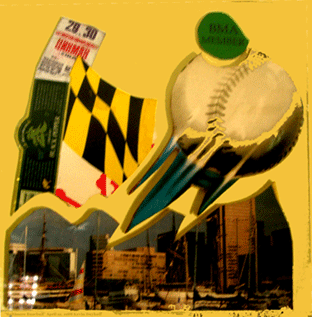
Former Republican U.S. Senator Charles McCurdy (Mac) Mathias has died at the age of 87.
Although he is most remembered for his decades of fervent support for civil rights; he was also know as an advocate for the Chesapeake Bay, against the war in Vietnam, and his repeated clashes with the conservative wing of the Republican Party.
Mathias served in the U.S. House of Representatives for the 6th congressional district, which includes Carroll County, from 1961 to 1969.
Afterwards he served in the U.S. Senate until 1987. He was succeeded by Senator Barbara A. Mikulski, who still holds the seat to this day.
He was born into a politically prominent old Maryland family in Frederick on July 24, 1922, where he attended public schools and graduated from Frederick High School in 1939.
He was the son of Charles Mathias, Sr. and Theresa Trail Mathias. Several ancestors in the Mathias family had served in the Maryland General Assembly.
A recent Washington Post tribute noted, “Sen. Mathias's great-grandfather served in the Maryland legislature in the 1860s, and his grandfather was a state senator who campaigned with Theodore Roosevelt. When the future senator was a boy, his father took him to the White House to meet presidents Calvin Coolidge and Herbert Hoover.”
He was living in Chevy Chase, Maryland, where his family reported that he died Monday from complications of Parkinson's disease.
Mathias also served in the Maryland House of Delegates from 1959 to 1960.
He graduated from Haverford College, Pennsylvania, in 1944; attended Yale University; and went on to receive a law degree from the University of Maryland in 1949
He served in the U.S. Navy, during World War II, from 1942 to 1946. After 1944, he was stationed in the Pacific Ocean theatre of the war and later in Japan, where he personally saw the devastation of Hiroshima and Nagasaki, after it was destroyed by an atomic bomb.
He returned home after the war and receiving his law degree, briefly practiced law in Frederick. He served as an assistant Maryland Attorney General from 1953 to 1954 and then moved-on to serve as the municipal attorney for the city of Frederick from 1954 to 1959.
It was while he served as the Frederick city attorney that he first developed a reputation as a stalwart advocate for civil rights.
While serving in the Maryland General Assembly in 1959, he worked hard to see that Maryland finally ratified the 14th Amendment to the U.S. Constitution. Maryland had not ratified the amendment, which gave African-Americans certain rights and privileges after the Civil War, almost 90 years earlier. Maryland was one of several states that did not ratify the amendment in the 1860s.
In 1968, according to multiple sources, including a New York Times tribute: in “his first election, to the Senate … he defeated Daniel Brewster, a Democratic incumbent who was a friend and former classmate at the University of Maryland Law School. Mr. Brewster had been an usher at Mr. Mathias’s wedding in 1958, and Mr. Mathias had been godfather to Mr. Brewster’s son.”
The Washington Post noted that Mathias described “the future of the Republican Party in a 1996 interview with the Baltimore Sun, Sen. Mathias said (at that time): ‘I'd like to think there would be a place for Abraham Lincoln, a place for Theodore Roosevelt, a place for Dwight D. Eisenhower. If there's a place for them, I'd like to think I could find a small niche.’
“In 2002, Sen. Mathias announced his opposition to the U.S. invasion of Iraq, and in 2008 he wrote an article for The Washington Post endorsing the presidential candidacy of Sen. Barack Obama (D-Ill.).
“Survivors include his wife of 51 years, Ann Bradford Mathias of Chevy Chase; two sons, Charles B. Mathias and Robert F. Mathias of the District. Other survivors include a sister, Theresa M. Michel of Frederick; a brother, Edward Trail Mathias of Baltimore; and two granddaughters.”


